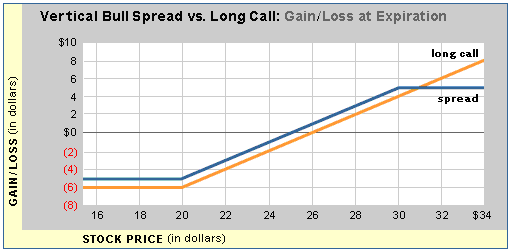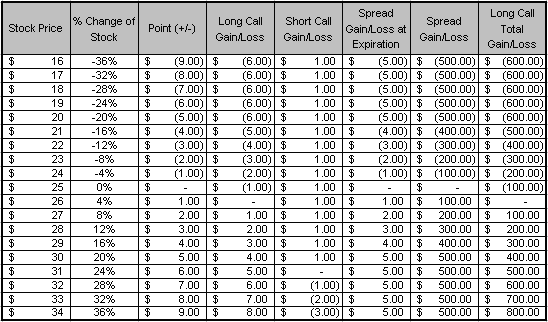Currently, XYZ trades at $25/share. The investor believes the stock will appreciate and wants to participate in the upward movement, but does not want to simply buy calls because of the expense/risk involved. Instead, the investor employs the spread strategy buying an in-the-money call (strike $20) for $6.00/share and selling an out-of-the-money call (strike $30) for $1.00/share. Using this strategy, the maximum loss is the difference between the premiums paid and the premiums received ($5 or $500). The maximum profit an investor can receive is the difference of the strike prices less the cost of the position. The breakeven price of 25 is calculated by adding the net debit of the spread to the strike price of the long option.

As can be seen from the following chart and table, the investor who buys the spread rather than simply investing in the call reduces his maximum loss by 1/6th, breaks even at $25 instead of $26, and only loses out to the call buyer if the stock price rises above 31 (at which point he would have a 100% return on his investment).
Spread vs. Long Call


 EXAMPLE - Bull Vertical Call Spread
EXAMPLE - Bull Vertical Call Spread